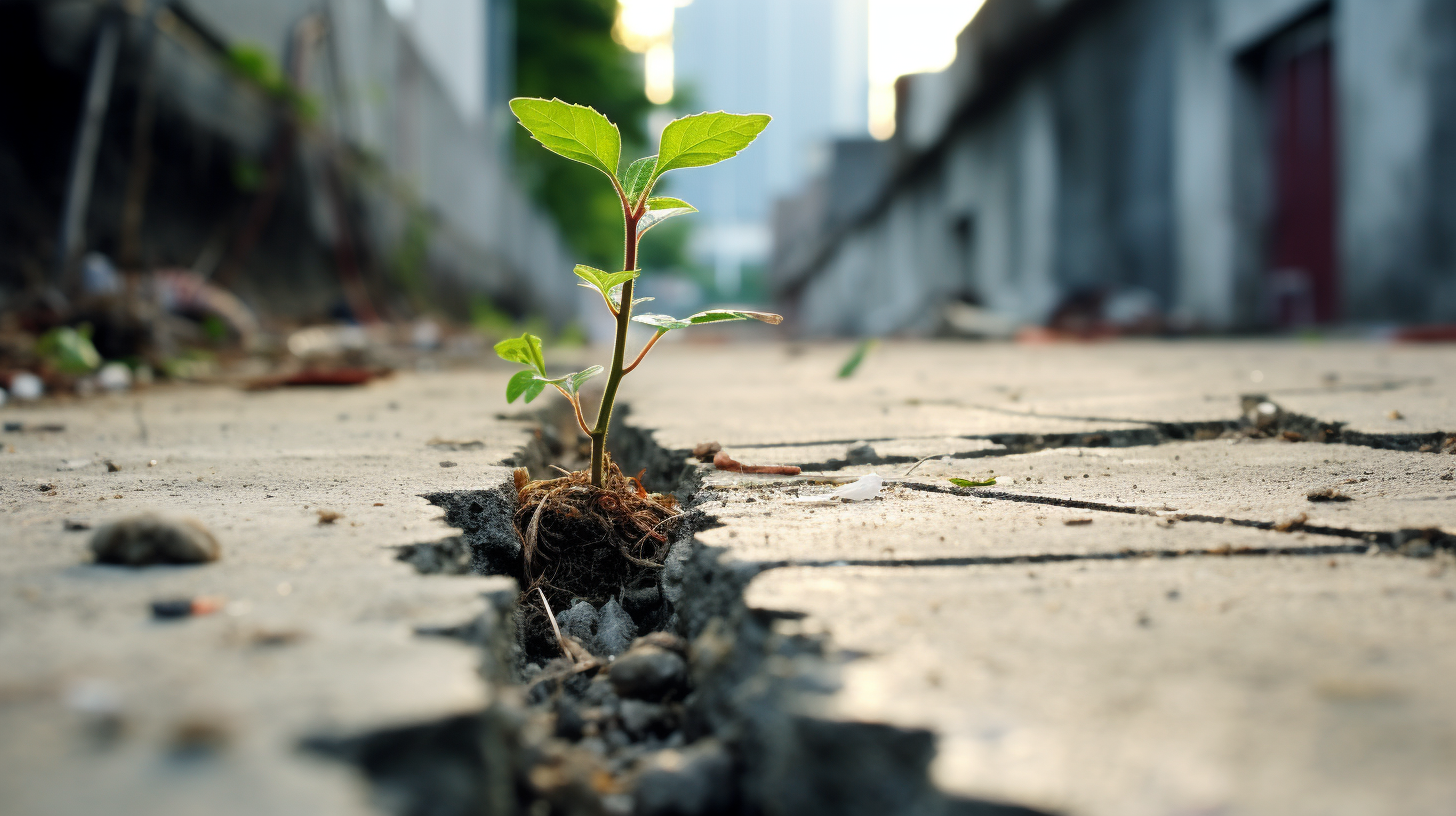In the heart of the concrete labyrinth where the sun seldom kisses the ground, the unthinkable occurs—a delicate green sprout pushes through the crack. The sight is eerie in our urban dystopia: nature’s seemingly feeble attempt to reclaim its habitat within the ubiquitous greys and steels of a cityscape neglected by humanity’s hubris. This is not a tale of hope but rather a stark reminder of what once was and what we, the inadvertent architects of demise, have chosen to ignore.
The urban landscape, a once teeming nexus of human innovation and progress, now gasps for breath under the relentless assault of environmental degradation. Amid the corrosion and decay wrought by relentless pollution and neglect, life – stubborn and resilient – ebbs through the fissures of our edifice. These seedlings that emerge from beneath the concrete cracks serve as harbingers of the urban wild; a wild that once roared with biodiversity but now whimpers for attention amidst the cacophony of climate calamity.
Plants, insignificant as they may appear in the grand theatre of decay, hold stories of resistance and survival. Botanists who roam these desolate urban sprawls whisper of a silent revolution—a diverse array of species, from the tenacious dandelion to the opportunistic moss, staging a comeback in the interstices left by our negligence. Their roots penetrate asphalt like nature’s veins, injecting life into the sterility of urban decline.
The flora’s resurgence is not without its irony. These ‘green insurgents’ lay down their roots in a battlefield where they were once the vanquished. Our concrete jungles, designed to keep the untamed at bay, now inadvertently provide the crevices for life to incubate anew. Yet, we must not misconstrue this as a call for celebration. For these shoots of the urban wild flourish not because of human actions but in spite of them. Their presence is a testament to the resilience of life, but it also underscores our failure to steward our own habitat.
The air in the cities may carry a hushed murmur—a rustling of leaves where silence once reigned. Patches of greenery erupt unexpectedly, forming impromptu gardens in the heart of urban desolation. These patches, in their insurrection, offer a muted beauty, a fleeting distraction from the bleakness of our constructed tombs. Birdsong occasionally punctuates the droning silence, a rare and haunting echo of the cacophony that might have once filled these spaces.
In the concrete crevices, amidst the pervasive smell of decay, lie herbaria of the possible. They hold the potential stories of what could flourish if humans were to abandon their skyscrapers and highways. Each seedling struggling through the rubble is a narrative fragment of a forgotten world—a world where nature’s labyrinth was the blueprint, and humanity dwelled within its bounds, not above them.
We have engineered our own dystopia, but the Earth, with her deep time wisdom, engineers life, relentless in her pursuit to cover the scars we have inflicted upon her. The urban seedlings, with their silent resilience, mirror the truth of our era—nature endures, rising even when choked by the concrete artworks of our own demise. They serve as a humble yet poignant reminder that despite our grand constructions and technologies, we too are bound to the Earth’s cycles.
Perhaps one day, the cracks will widen, letting in more light, more life, until the green tendrils of the urban wild envelop our stark edifices, softening the lines of our self-imposed exile from nature. Until then, we bear witness to these seedlings—not as symbols of hope, but as chroniclers of a world in the throes of self-inflicted suffering and, perhaps, the last embers of what we could have cherished. It is within these very cracks, in the whispers of a dystopian world, that we are reminded of the beauty and resilience that persists in spite of us.
